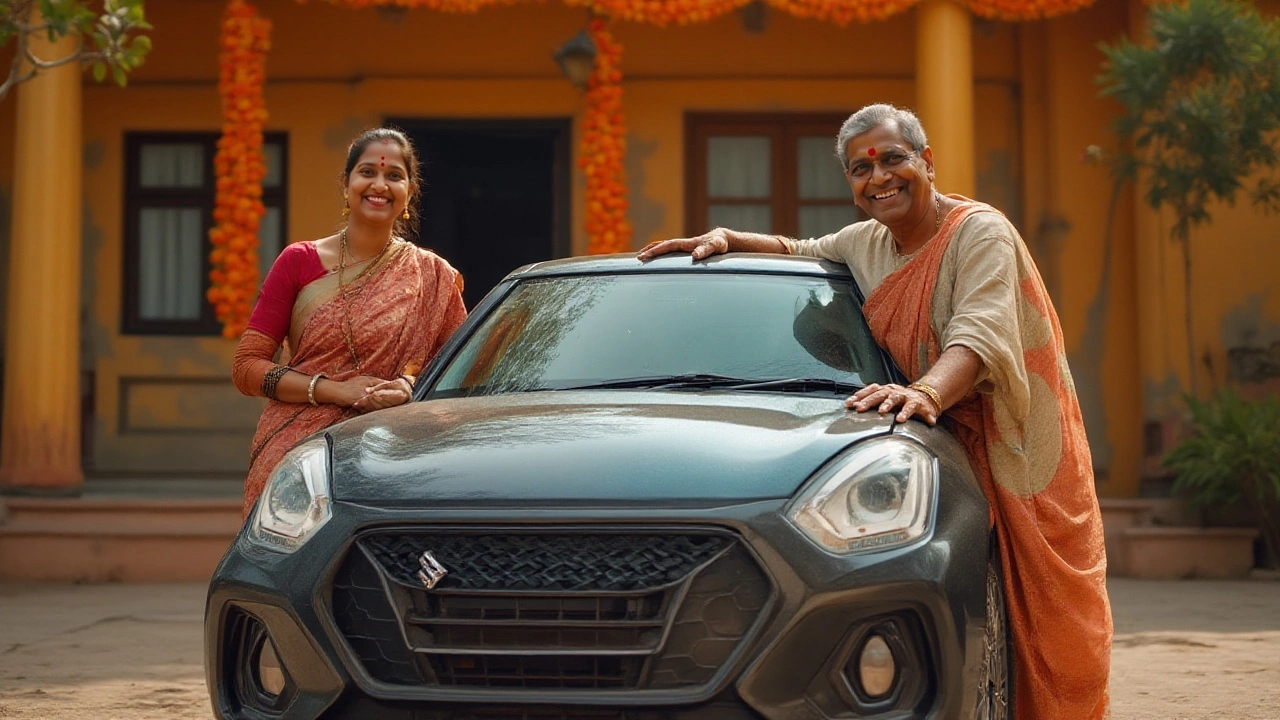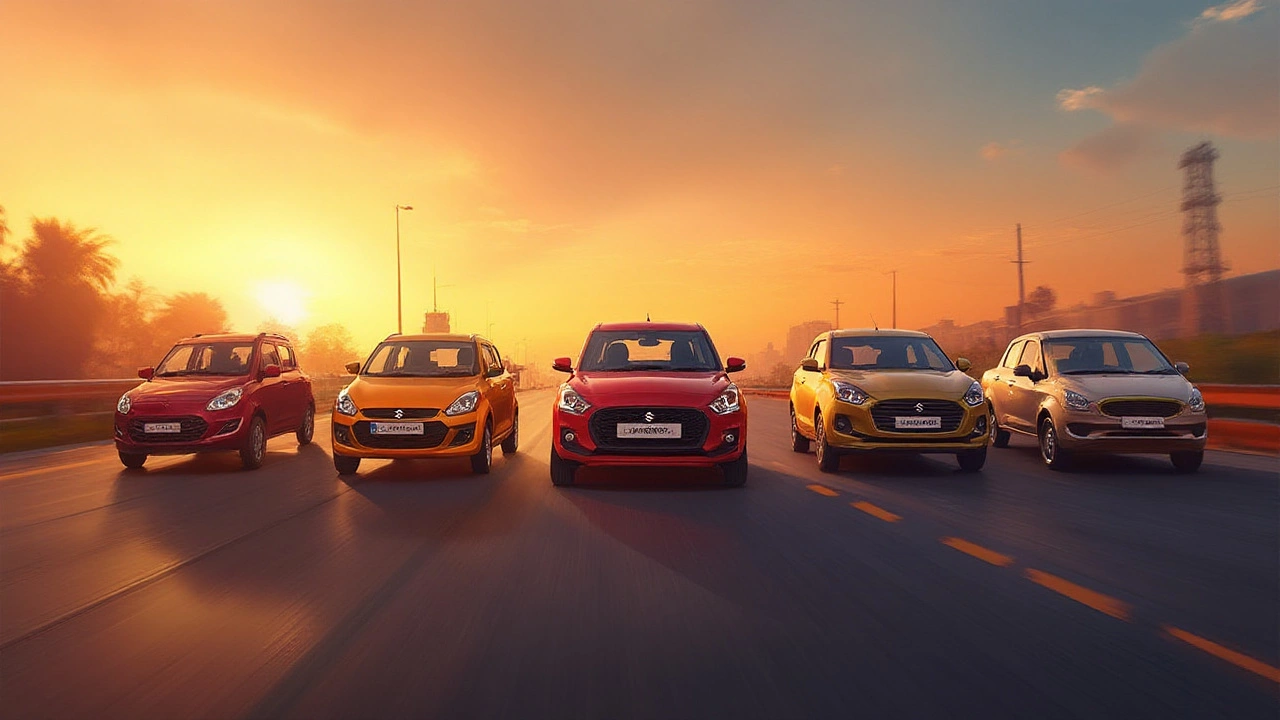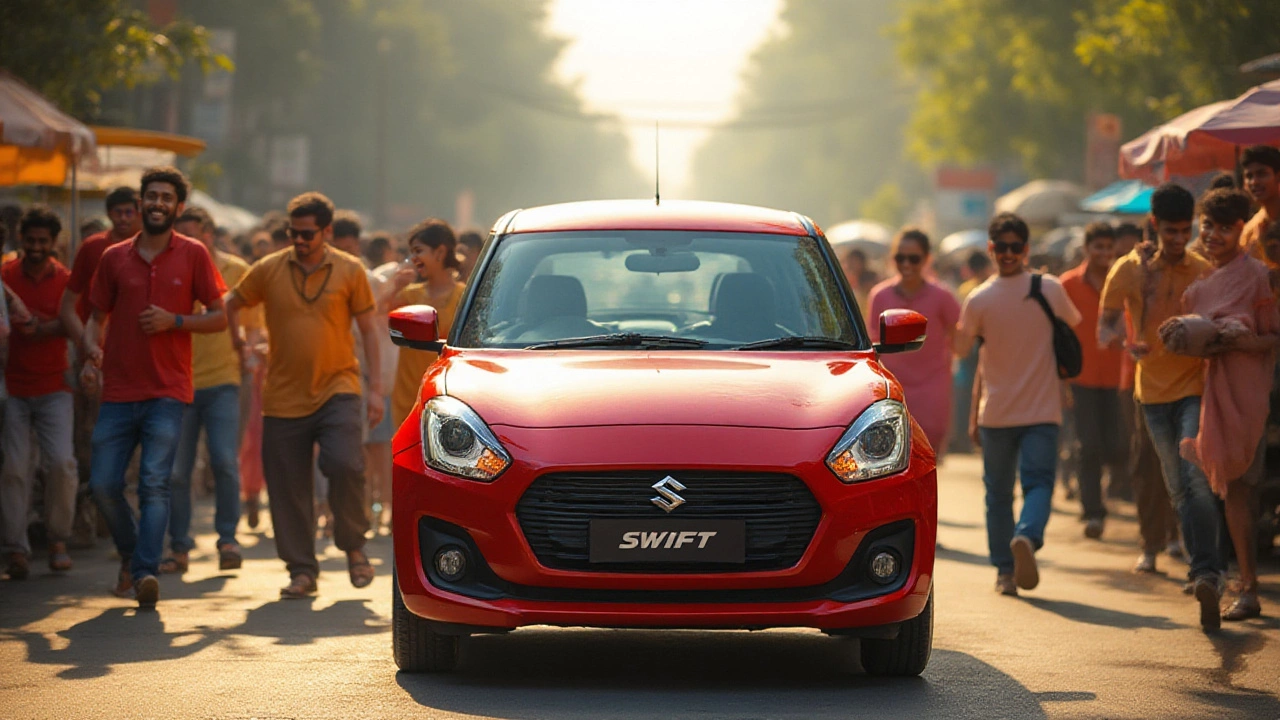Ever noticed how some cars are everywhere you look, weaving through traffic jams and parked on every street corner? There’s one car in India that seems to rule the roads, dubbed the uncontested “King of Cars.” The battle for this title has been fierce over decades, as carmakers from India and around the world have tried to snag the crown. But one brand keeps popping up in conversations, from seasoned auto experts to regular folks buying their first wheels—Maruti Suzuki. More specifically, the Maruti Suzuki Swift. Why does this humble hatchback command so much respect and loyalty?
The Rise of Maruti Suzuki: How One Brand Revolutionized Indian Driving
India’s car story flips a big chapter in 1983, when Maruti Suzuki released its first car, the Maruti 800. Until then, cars were either out of reach for common families or considered a luxurious status symbol. Maruti changed the game, making cars accessible and easier to maintain. But how did Maruti become a household name instead of just another auto brand? Affordability, fuel efficiency, and after-sales service—nobody did it better. It wasn’t just about launching cheaper cars; Maruti mass-produced vehicles that were reliable, easy to service, and light on the pocket. The Indian market, notorious for rough roads and rougher traffic, needed a car that could take a beating and keep running. Maruti delivered this—again and again.
Fast forward to 2005, and the Swift arrived on the scene. While Indians were used to boxy, conservative cars, the Swift set pulses racing with its sporty design and zippy engine. People who’d never thought of owning a hatchback wanted the Swift for its looks and its gutsy performance. In its first year alone, the Swift crossed 50,000 bookings—a massive deal back then. Maruti’s robust dealer network (over 3,100 outlets today) made sure everyone could buy or fix a Swift, from Manipur to Mumbai.
Other carmakers tried fighting for the throne—Hyundai with the Santro and i10, Tata with the Indica, even global heavyweights like Honda. But none could match Maruti Suzuki’s perfect storm of pricing, service, and trust. When competition stiffened, Maruti didn’t rest easy. The company constantly released newer, better versions of the Swift, listening closely to Indian buyers’ feedback. This adaptability kept Maruti on top, while others sometimes faded or relied on their international reputation more than local relevance.
One thing that keeps Maruti's appeal sky-high is their customer-first attitude. For example, the company runs one of India’s largest sanctioned driving schools, so people interested in their first car trust the Maruti brand before even making a purchase. Service centers rarely run out of spare parts; waiting times are legendary short. Even after decades, Maruti cars remain easy to maintain, another big reason first-time buyers and folks in small towns stick with them. So it’s no surprise Swift keeps leading sales charts year after year.
Why the Swift? What Makes It the King and Not Others?
You might wonder, out of so many Maruti models—Alto, WagonR, Dzire—why does the Swift get the royal nod? Simple: It strikes the best balance between style, performance, and value. At its launch, the Swift wowed everyone because it looked nothing like other hatchbacks. While the Alto earned love as an affordable option, and Dzire became a top pick for sedans and taxis, the Swift cut across age groups. Teenagers, working professionals, and even retirees queued up for test drives. Its punchy engines (first the 1.3-liter petrol, later the peppier 1.2-liter K-Series) and peppy handling made sure drivers could actually have fun behind the wheel.
Let’s face it: practicality often wins the day in India, and the Swift scores here too. The hatchback is small enough for narrow city lanes but not cramped. Its boot space, foldable seats, and plenty of storage make road trips and daily commutes equally easy. Mileage is a huge deal for Indian buyers, and the Swift regularly returns over 20 km per liter. Even in resale markets, Swifts fetch better prices than competitors because people know parts are cheap and mechanics everywhere can handle repairs. Since 2005, every new generation—2009, 2011, 2017, and the 2024 facelift—has kept it fresh and competitive. The second-gen Swift alone sold over 6 lakh units in just four years.
Indian safety standards have improved, and Maruti has kept up the pace, improving chassis, integrating airbags, and embracing safer driving tech. From ABS to EBD and ISOFIX child seat mounts in newer models, the Swift isn't just about looks and mileage anymore—it’s built for families too. Factory-fitted CNG variants have also gained traction with the rising fuel prices, which gives budget-conscious drivers more reasons to choose a Swift.
When rival hatchbacks—Hyundai i20, Volkswagen Polo, Tata Altroz—come up, the argument always circles back to one thing: Swift’s unbeatable package. Others might offer fancy gadgets or bigger engines, but Swift’s all-rounder profile keeps it top of mind. This isn’t just theory. Check out the numbers in the table below:
| Model | Launch Year | Total Units Sold (till 2025) | Fuel Efficiency (km/l) | Resale Value (5-year) |
|---|---|---|---|---|
| Maruti Suzuki Swift | 2005 | ~3.2 million | 20.9 - 23.2 | 65-75% |
| Hyundai i20 | 2008 | ~1.5 million | 19.6 - 21.0 | 55-60% |
| Volkswagen Polo | 2009 | ~0.4 million | 17.7 - 20.0 | 50-55% |
| Tata Altroz | 2020 | ~0.32 million | 18.5 - 23.0 | 46-52% |
The numbers don’t lie. The Swift has consistently outsold its rivals, keeps its resale value higher, and beats or matches them on mileage. That’s why even 20 years later, if you ask an average Indian which car they would pick to last them 10 years—nine out of ten times, it’s the Swift.

Indian Car Culture and the Swift Effect
Owning a car in India isn’t just about getting from point A to point B. It’s a mark of achievement, a family milestone. The Swift, ever since it hit the market, became more than just a set of wheels. Families started making memories—first road trips, shopping sprees, and college drop-offs—all in their Swifts. You’ll easily spot YouTube videos and Instagram reels of Swift owners showing off their modifications—custom body kits, alloy wheels, flashy lights. Car clubs and weekend drives have become a way of life; the "Swift Nation" Facebook and WhatsApp groups have hundreds of thousands of fans trading tips and stories every day.
If you’ve ever hung out at a mechanic’s shop, you’ll know that fixing a Swift rarely breaks the bank. From small scratches to major engine jobs, the parts are everywhere and affordable. That means fewer worries about surprise expenses or long waiting times—a big reason why Indian parents recommend the Swift to first-time drivers. It’s even a popular choice for first-generation business owners who want reliable, impressive transportation for their daily grind.
The Swift’s place in pop culture is undeniable. Remember rappers like Raftaar showing off their drives, or movie stars using Swifts in key scenes? The car is often featured in music videos, celebrity endorsements, and even memes poking fun at how “every colony seems to have a dozen Swifts.” The hatchback’s roaring presence in Tier-2 and Tier-3 cities, where flashier cars don’t make sense, helped the Swift outshine fancier global rivals. Maruti even threw in limited edition color options—remember the all-black and the RS versions?—just to keep things interesting for die-hard fans.
Safety isn’t ignored either. Recent generations include hill-hold, smart infotainment, and keyless entry—features that were once reserved for way pricier models. Second-hand Swifts, no matter how old, stay in demand, which speaks volumes about their lasting charm.
What Lies Ahead: Will the Swift Keep Its Crown?
Now the auto industry is shifting gears—literally. Electric cars are making a slow but steady entrance. Fuel prices swing wildly, traffic is thick, and Indian consumers ask for features like connected tech, superior safety, and a dash of style. In this landscape, can the Swift stay the king?
Maruti Suzuki isn’t sitting around waiting for the storm to pass. The newest Swift launches are lighter, more fuel-efficient (using the latest Heartect platform), and loaded with hybrid options. Maruti is consistently investing in research, exploring hybrid and electric models so their next-gen buyers won’t have to look for alternatives. The dealer and service network is still growing, especially in rural India—untapped markets that global brands can only dream of.
One big ace up the Swift’s sleeve: government policies, like FAME-II subsidies, actually encourage buyers to try hybrid and electric cars. If Maruti can get its electric Swift (rumored to be launching in late 2025) working as reliably as the petrol version, the brand’s legacy will continue. And don’t underestimate nostalgia—plenty of Indian families, who grew up with a Swift parked outside, will line up for the latest gen just for the memories attached.
The competition is catching up, no doubt. Tata has found its groove with punchy hatches like the Altroz and the electric Tiago, while Hyundai keeps pushing the i20 with new gadgets and sportier looks. Even global players are trying to adjust to Indian tastes, partnering with local firms to cut costs and boost service. But Maruti’s Swift sits in a unique sweet spot. It doesn’t just sell on price or feature list alone. It’s about trust, legacy, and a simple truth—no matter how crowded the market, the Swift always finds a way to stand out.

Tips and Takeaways: How to Pick the Right King for You
So, if you’re thinking about joining the Swift club, here’s what you should keep in mind. First, prioritize your needs. If you do most of your driving in the city, the Swift’s compact size and tight turning radius make parking and zipping through traffic a breeze. Long-distance drivers will love the comfort features in the top trims, like adjustable steering, armrests, and cruise control. Families? The hatchback still has you covered with a trunk big enough for weekend luggage or the random home appliances everyone’s cousin needs hauled back from the bazaar.
For the best deal, compare prices from at least two dealerships. Maruti’s discounts and loyalty offers are legendary and can shave off tens of thousands from sticker prices. New drivers should seriously consider the VXi or ZXi trims—features like automatic climate control and rear parking sensors make daily life easier, while lowering insurance costs. Going for CNG? Only stick to factory-fitted options; there’s a drop in power but huge savings in fuel bills. Techies can check out the new SmartPlay Studio infotainment system, which supports Android Auto and Apple CarPlay—perfect for streaming playlists and hands-free calls. Don’t forget to buy insurance with zero depreciation, which keeps your repair costs minimal even in big cities where fender-benders are common.
- Check service costs by looking up actual customer bills online before you book service appointments—it’ll save you from hidden charges.
- If you plan to keep the car for a decade, stick to Maruti’s scheduled maintenance; resale value shoots up if you show a full service record.
- An anti-theft GPS tracker is a smart add-on since Swifts are a top pick for thieves too.
- Customizing your Swift is easy, but always buy official accessories—unofficial ones can void warranties.
- For family buyers, test if child seats fit comfortably—recent Swifts get good marks for rear seat comfort and ISOFIX mounts.
At the end of the day, the Maruti Suzuki Swift doesn’t just roll out of the factory as a car. It comes loaded with expectations, a proven track record, and a fan following almost as massive as any Bollywood superstar. In a country where trust and value mean everything, it’s no wonder this hatchback wears the “King of Cars” crown with such effortless swag.
